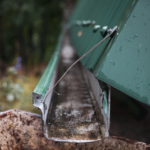Manufacturing Methods
ISSUE
Many customers are curious as to the production methods used with metal roofing.
ANALYSIS
A variety of production methods are used in the manufacturing of metal roofing and accessory components. Generally, the more complex the shape is, the more involved the manufacturing process is. While some of the original metal roofs were actually site-formed using a variety of benders and hand tools, modern manufacturing techniques allow for the more error-proof production of products. Most vertical panels are rollformed and there are portable rollformers available for manufacturing some of these panels. Generally, portable machines run lower quality, lighter thickness, and less complicated products. Such machines must be kept in good adjustment by an experienced technician. Tapered roof panels, such as those used on conical-shaped roofs, are either partially or entirely press-braked or they are run through a rollformer twice, once for each lock. Some continuous eave-to-ridge tile profiles, as well as some modularized tile profiles, are rollformed and then press-stamped to create the appearance of individual tile courses. The more complex shake, shingles, slate, and tile profiles are entirely press-formed on presses up to 800 tons in capacity.
Of these, the very simple profiles might be stamped in just one die while the more complex are stamped by progressive dies sets with as many as eight individual dies required to create the final part. Many simple, lineal accessories are rollformed while the more individual cap accessories are press-formed. Some lineals may also be press-braked. Virtually all metal roofing is formed from pre-painted metal with a wide variety of coating qualities and types available. The durability of these coatings is proven by the intense forming they must endure. Some manufacturers also apply coatings after the products are formed, such as “stone” (aggregate) coatings and powder coatings like Classic Products’ exclusive ThermoBond coating. These coatings are often applied to heavily-formed steel products for technical reasons but can also be applied to other products for cosmetic reasons.
